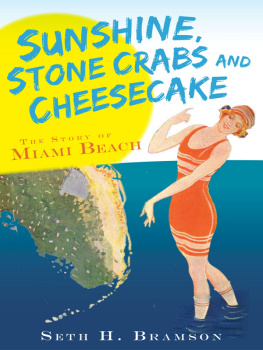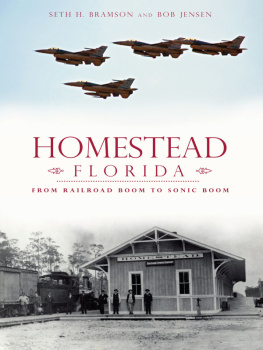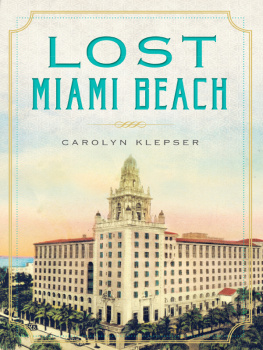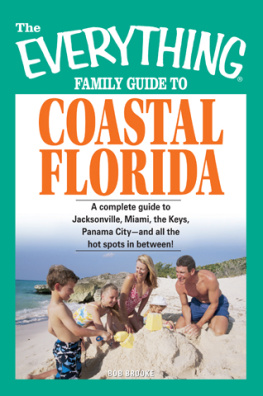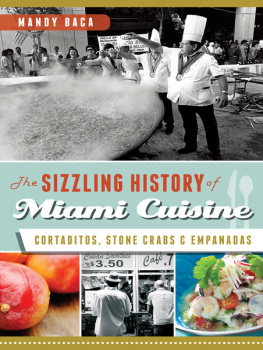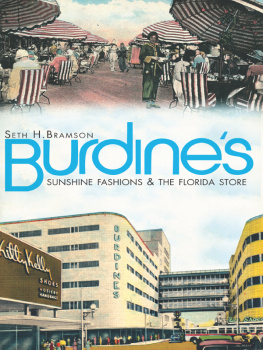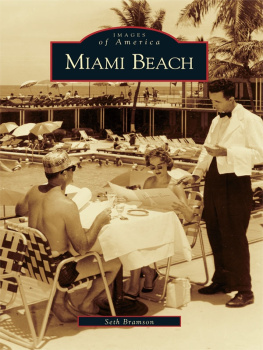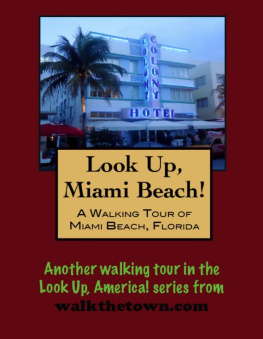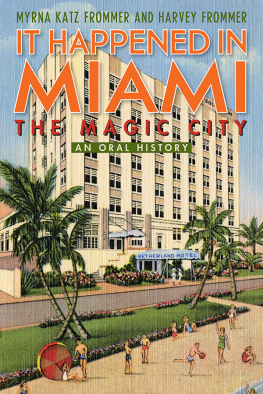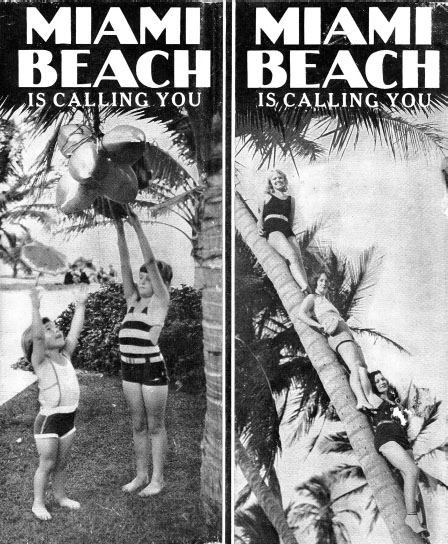
It was the worst Depression in the nations history, and yet, for the 193031 season, Miami Beach was calling to people from all over an economically battered nation, enticing them to come to a land of sunshine, palm trees, happy children, fine schools and cheesecake. In Miami and Miami Beach, the depredations of the Depression were not only measurably less than in the manufacturing areas of the North and Midwest, but also, because of the mini-boom created by the building of the art deco hotels, there were jobs to be had on Miami Beach. So indeed, sunshine, stone crabs and cheesecakeand Miami Beachare, once again, calling you!

Published by The History Press
Charleston, SC 29403
www.historypress.net
Copyright 2009 by Seth H. Bramson
All rights reserved
First published 2009
e-book edition 2013
Manufactured in the United States
ISBN 978.1.62584.334.0
Library of Congress Cataloging-in-Publication Data
Bramson, Seth, 1944
Sunshine, stone crabs and cheesecake : the story of Miami Beach / Seth H. Bramson.
p. cm.
print edition ISBN 978-1-59629-754-8
1. Miami Beach (Fla.)--History. 2. Miami Beach (Fla.)--Pictorial works. 3. Miami Beach (Fla.)--Social life and customs. I. Title. II. Title: Story of Miami Beach.
F319.M62B74 2009
975.9381--dc22
2009032513
Notice: The information in this book is true and complete to the best of our knowledge. It is offered without guarantee on the part of the author or The History Press. The author and The History Press disclaim all liability in connection with the use of this book.
All rights reserved. No part of this book may be reproduced or transmitted in any form whatsoever without prior written permission from the publisher except in the case of brief quotations embodied in critical articles and reviews.
Sunshine, Stone Crabs and Cheesecake is dedicated to two of Miami Beachs most revered families, both of them pioneers. Without the great works and contributions of the Galbut and Weiss/Sawitz/Bass families, the face of the city would be much different than it is today. The belief of both families in Miami Beach as a wonderful place to live, work and go to school has been evident for decades, and it is to Bessie and Hyman Galbut and their four sons and daughters-in-law; Jennie, Joe and Jesse Weiss; Jesses daughter, JoAnn Bass; and JoAnns son, Stephen Sawitz, that this book is lovingly and gratefully dedicated.
CONTENTS
PREFACE
Miami Beach is so unique, so different and such an incredible place that unlike almost every other place in the country where one can, through study and research, garner enough history and information to write about it, one cannot do so when writing about Miami Beach.
Legally, of course, one may write about anything he or she chooses, but to have outlanders or flatlanders (not that there are any mountains or even hills in south Florida, but you get the idea) try to write about Miami Beach (even those who grew up on the Miami side of Biscayne Bay cant and dont have the feeling for or understanding of what they are writing about) without having actually lived on and grown up there is, in the Yiddishism, a shanda for the neighbors. A shanda is, in effect, something to be ashamed of.
To write about Miami Beachto really write about Miami Beach, to truly understand the place one is writing aboutone must have lived on, grown up on, gone to school on and worked on Miami Beach. Only then can and does one have the true feeling and understanding of that incredible place, and it is that feeling and understanding that imbues the few who fulfill the four qualifications noted above with the background and knowledge of not only what growing up on Miami Beach was like but also what he or she is writing about.
The writings about the beach by a person who grew up on the beach are far more accurate and legitimate than the writings by one who did not grow up there. The four best examples of lack of empathy or feeling include four books on the history of Miami Beach, or its hotels, hospital or people, written by parties who were not only not from the beach but who also had nothing directly to do with what they were writing about, no real and true firsthand knowledge of the city, the people or the entities involved.
There is another major differentiation. Almost all of the photos in the books written by flatlanders have come from the usual suspectslibraries, museums and historical societieswhile in this book, as well as in my earlier Miami Beach book and the two other books about the city written by people who also have the true and legitimate pedigrees to write about Miami Beach, most of the images emanate from private collections or other untapped sources. In this bookas in my first fifteenmore than 90 percent of the photographs have never before been published.
This is only the fourth book on or about Miami Beach and its history written by a person who was there, and it is the second by this writer. One of the other two was written by Michele Oka Doner and Mickey Wolfson, and it is a wonderful and beautifully illustrated story of growing up in the worlds playground, primarily because Michele and Mickey are Miami Beach people. The other is disgraced former mayor Alex Daouds book about illegal and unethical activities and behavior on Miami Beach, and whether one agrees with or likes the content or the author, the fact is that Alex fulfills the four qualifications necessary to write a book on and about the beach.
It should also be noted that there are several individuals and institutions who either do not appear at all in this book or appear only minimally or peripherally, and I want to make it totally and completely clear that this is because those people or organizations (four, in particular) either ignored my entreaties for their participation or acted so reprehensibly and irresponsibly that their actions, either individually or on behalf of those organizations, were nothing short of foolish and shameful. Names? We dont need no stinking names! Theyand Iknow who they are.
A great many books and articles have been written about the city going back to the 1920s. Some were well done, some were fair and some were riddled with errors. But to really write about Miami Beach, to write about it with feeling, understanding and even compassion, one must know or have known the people and places he or she is writing about, and not just by having looked up some questionable facts on Wikipedia or even in some more respectable sources (see the example in of the error-filled article about Lincoln Roads history).
Sadly, though, it is not just the writing that is often without validity. Too many of the walking tours are laden with inaccuracies, nonfactual remarks purporting to be true and made-up nonsense that may sound good but is without basis in truth or fact. And it is the same with too many of the articles and books written about Miami Beach, the authors of which, after a couple of years of living in the sun and fun capital of the world, decided that they knew enough about the city to write whatever it was that they wanted to write. They didnt, and in too many cases, the sophomoric writing and total lack of factual knowledge is appalling.
So from someone who lived on, grew up on, went to school on and worked on Miami Beach, I certainly hope that when you finish reading this volume, you will agree that one must have fulfilled the four qualifications noted above before he or she can (or should) write about Miami Beach. If I have done my job, this book will prove that to you.
Next page
